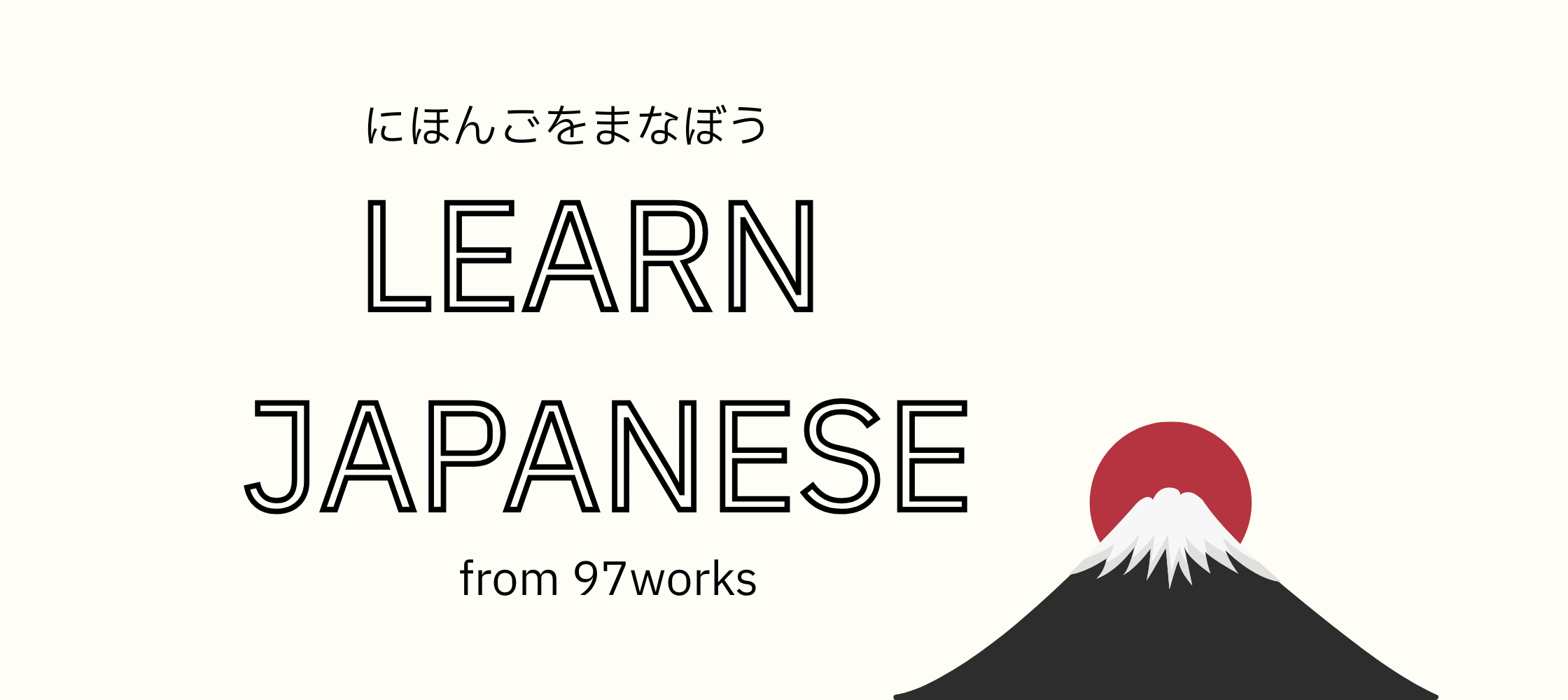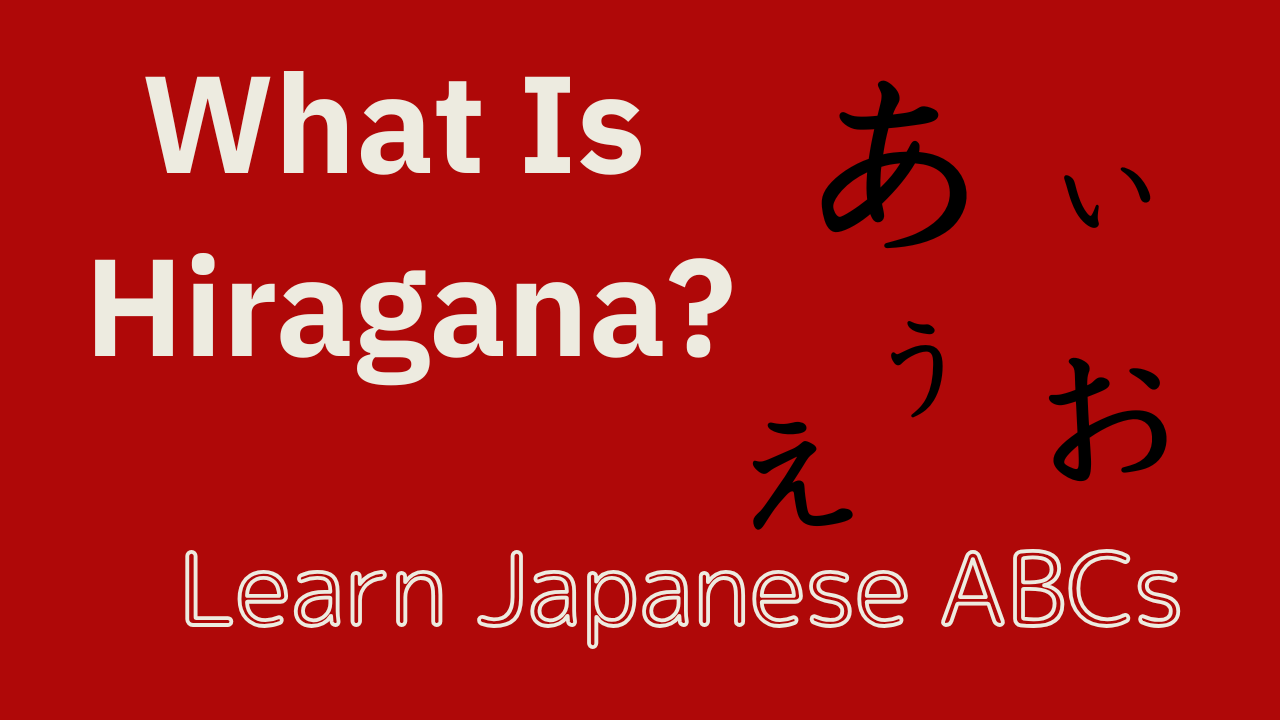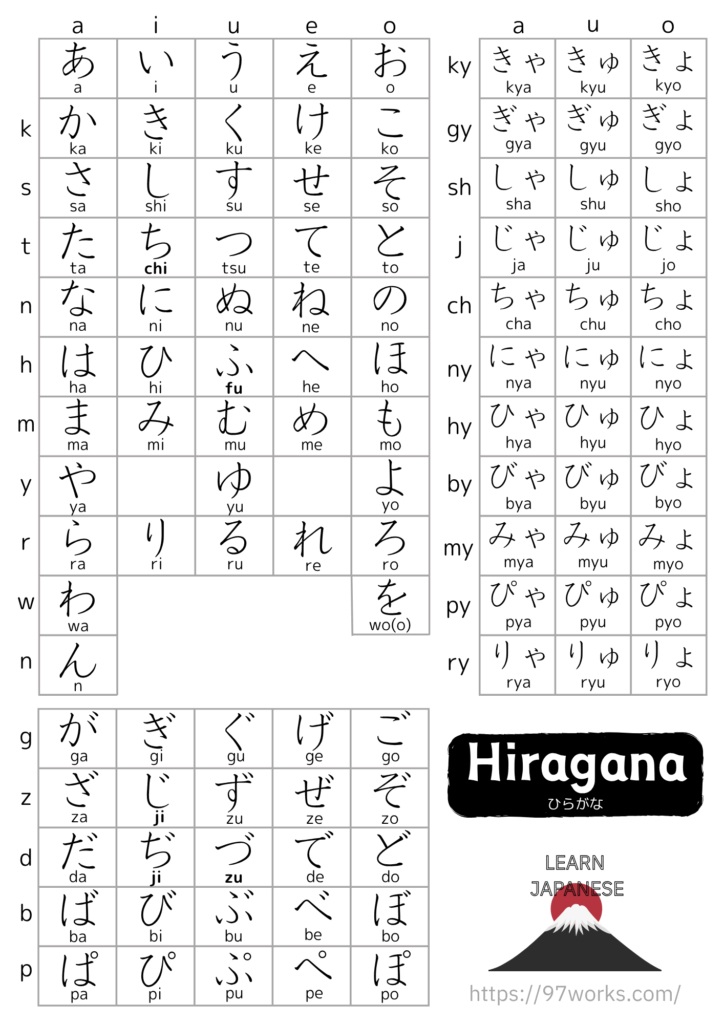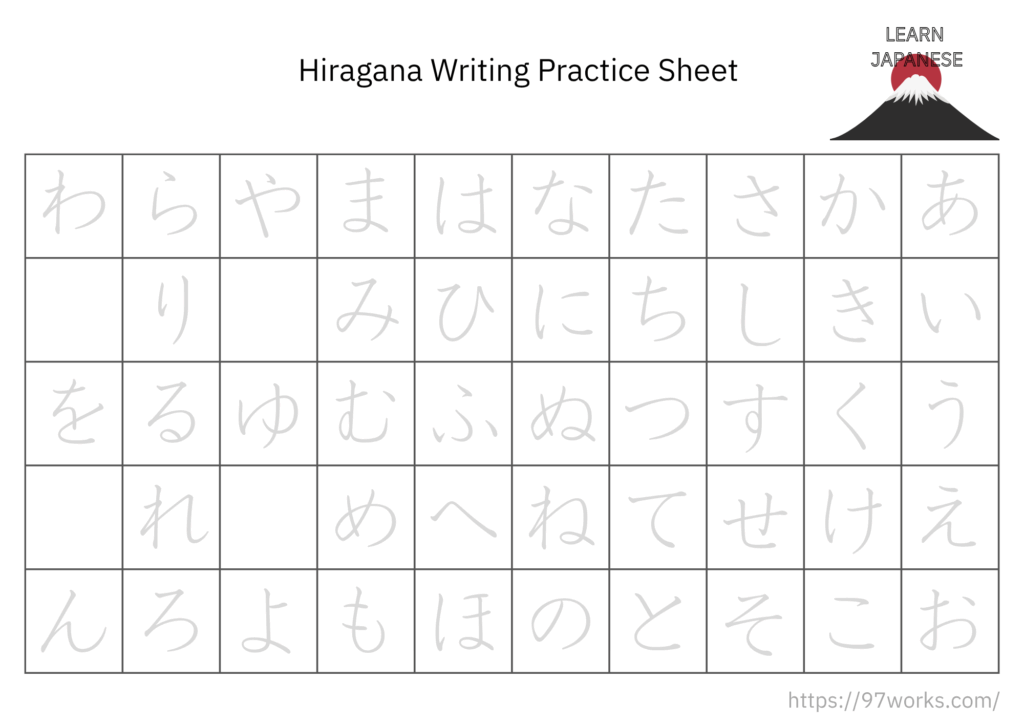If you’re starting to learn Japanese, one of the first things you’ll encounter is hiragana. It’s one of the three writing systems used in Japanese, and it plays a very important role in reading and writing. In this article, we’ll explain what hiragana is, why it’s important, and how you can start learning it.
Free printable PDF hiragana chart and practice sheet.
Click on the image to open the file!
What Is Hiragana?
Hiragana is a set of 46 basic characters used to write native Japanese words and grammatical elements. Each character represents a sound (syllable), and together they form the foundation of the Japanese writing system.
For example:
- さ (sa)
- き (ki)
- た (ta)
Hiragana is used in many situations:
- To write words that don’t have kanji
- To write grammatical parts of a sentence (like particles and verb endings)
- To show how to read kanji (called furigana)
Hiragana Usage
- Grammatical Elements: Particles, auxiliary verbs, and conjunctions are written in Hiragana.
- Example: が (ga – subject marker), を (wo – object marker), です (desu – copula)
- Parts of Words: Many words combine Kanji and Hiragana. Verb and adjective inflections, in particular, are written in Hiragana.
- Example: 食べる (たべる – taberu – to eat), 美しい (うつくしい – utsukushii – beautiful)
- Furigana for Readability: Hiragana is used as furigana, small characters written above or beside Kanji to indicate their pronunciation.
- Example: 学校 (がっこう – gakkou – school)
- Words Written Only in Hiragana: Some words are written in Hiragana even though they have Kanji forms. This is common in everyday words or in texts for children.
- Example: さくら (sakura – cherry blossom), こんにちは (konnichiwa – hello)
Hiragana vs Katakana and Kanji
Japanese writing uses three scripts:
- Hiragana – for native words and grammar
- Katakana – for foreign words, names, and onomatopoeia
- Kanji – Chinese characters used for many nouns, verbs, and adjectives
Hiragana is the easiest and most important to learn first. It will help you read simple Japanese sentences even before you know any kanji.
Conclusion
Hiragana is a vital part of learning Japanese. It may look difficult at first, but with regular practice, you’ll be able to read and write it confidently. Start small, be consistent, and don’t give up—you’re building a strong foundation for your Japanese language journey!




